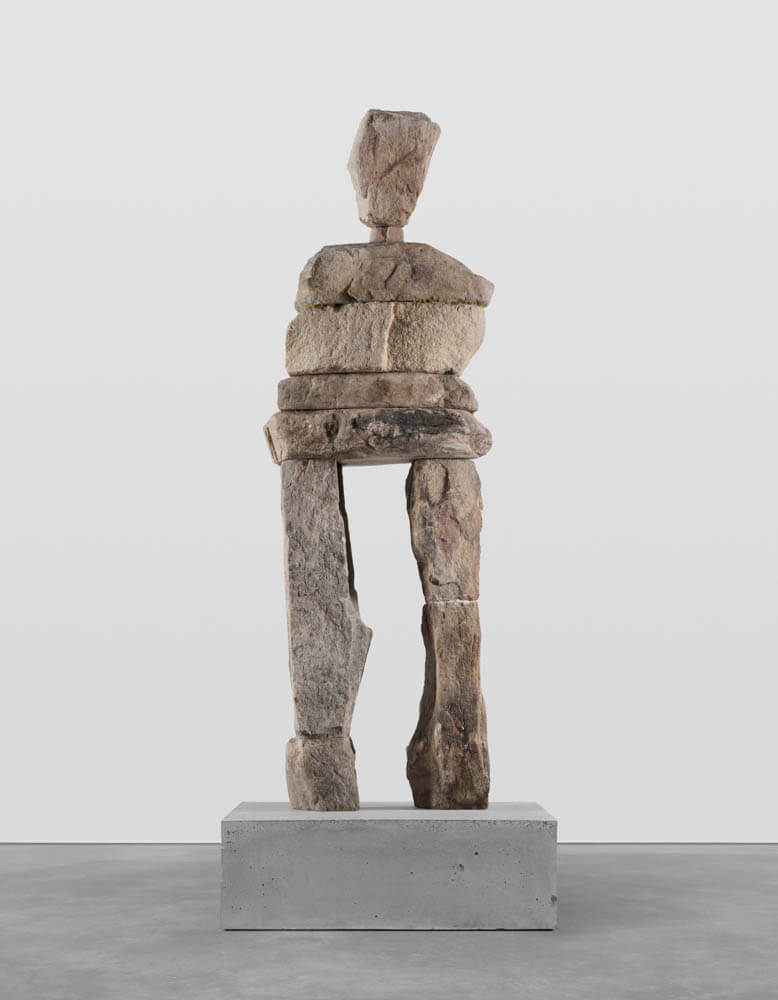
The Clever Soul is witty and curious. Someone openminded and adaptable. May be someone unnervingly intuitive.
Explore the works below. Before expanding the text, think to yourself:
What do you see?
What do you feel?
What might it be addressing?
What questions do you have?
Do you like it? Why or why not?
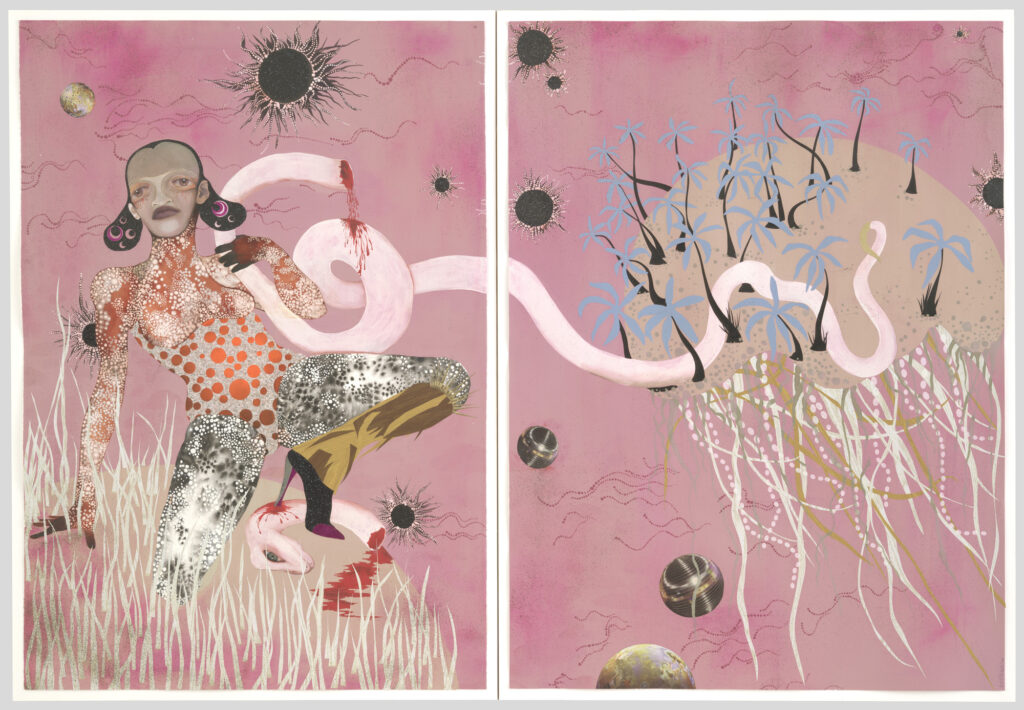
Expand to learn more
This is Yo Mama (2003), a collage on paper using printed and painted paper, ink, mica flakes, and synthetic polymer sheeting to create the image you see. This work is a tribute to Funmilayo Aníkúlápó-Kuti, a Nigerian feminist who fought against female genital mutilation.
In Yo Mama, Mutu depicts Aníkúlápó-Kuti as an allegorical ‘Eve’ character, but one who defeated the snake — an eternally phallic symbol. She holds the beheaded corpse of the snake with her heel impaled into its neck. In dedicating the piece to Aníkúlápó-Kuti, Mutu rejects the dominant masculine culture that subjects women to genital mutilation and other infringements upon their bodies. Mutu’s Eve rejects the idea of the original sin, allowing sexuality, beauty, and motherhood to be powerful, not subjugated.
In Yo Mama, the Clever soul is Aníkúlápó-Kuti herself. Also known as Chief Funmilayo Ransome-Kuti, she was a true pioneering woman. She was the first woman to attend the Abeokuta Grammar School in Nigeria, founded the Abeokuta Women’s Union advocated for women’s suffrage, and was described as the “Lioness of Lisabi”.
About the Artist
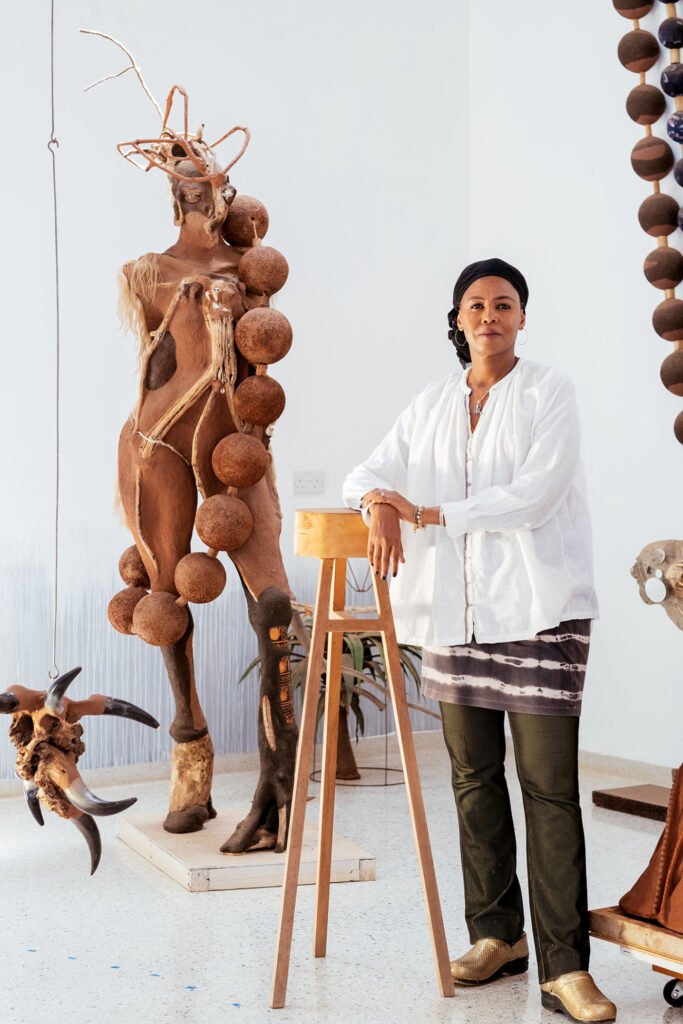
Wangechi Mutu (b. 1972) is a Kenyan visual artist who began working with collage before moving towards sculpture in more recent years. She currently splits her time between Nairobi, Kenya and New York City. Much of her work deals with the legacies of colonization and a type of trauma she names as “anglophone trauma”. Her work tends to focus on women and the female body, particularly the Black, African woman’s body. Stylistically, she is considered part of the Afrofuturist movement.
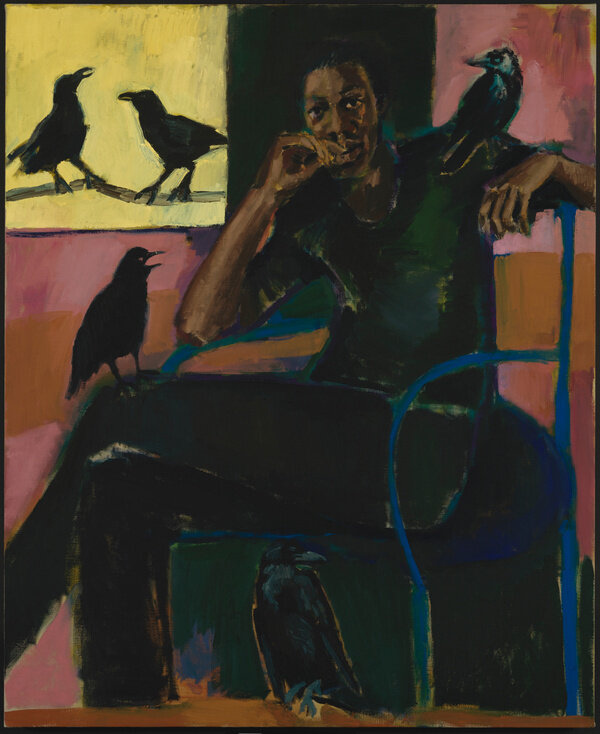
Expand to learn more
This is An Unkindness (2019), a painting by Lynette Yiadom-Boakye. An Unkindness depicts a man sitting in a chair surrounded by ravens. The man looks straight out of the painting at the viewer. He wears plain, black clothes and his feet are cut out of the image, meaning we cannot see his shoes: this man exists outside of our knowledge of space and time. Three of the Ravens are perched around him or the chair he sits in, while the two in the back seem to be within a painting, within this painting. Ravens have complicated and often contradictory meanings across cultures. For some, the raven is an omen of death, stemming from their stark black color, however ravens also represent wisdom and transformation. Perhaps, Yiadom-Boakye is responding to the associations between Blackness and death, by situating them around her Black figures. The title refers to the name for a group of ravens—an Unkindness of Ravens.
What do you think? What do the ravens represent here? How is the man related to the ravens?
About the Artist

Lynette Yiadom-Boakye (b. 1977) is a British artist of Ghanaian heritage. She is best known for her portraits of imaginary Black subjects. Her style can be described as raw with muted colors and a general stillness to her works. She engages with the power of vagueness.
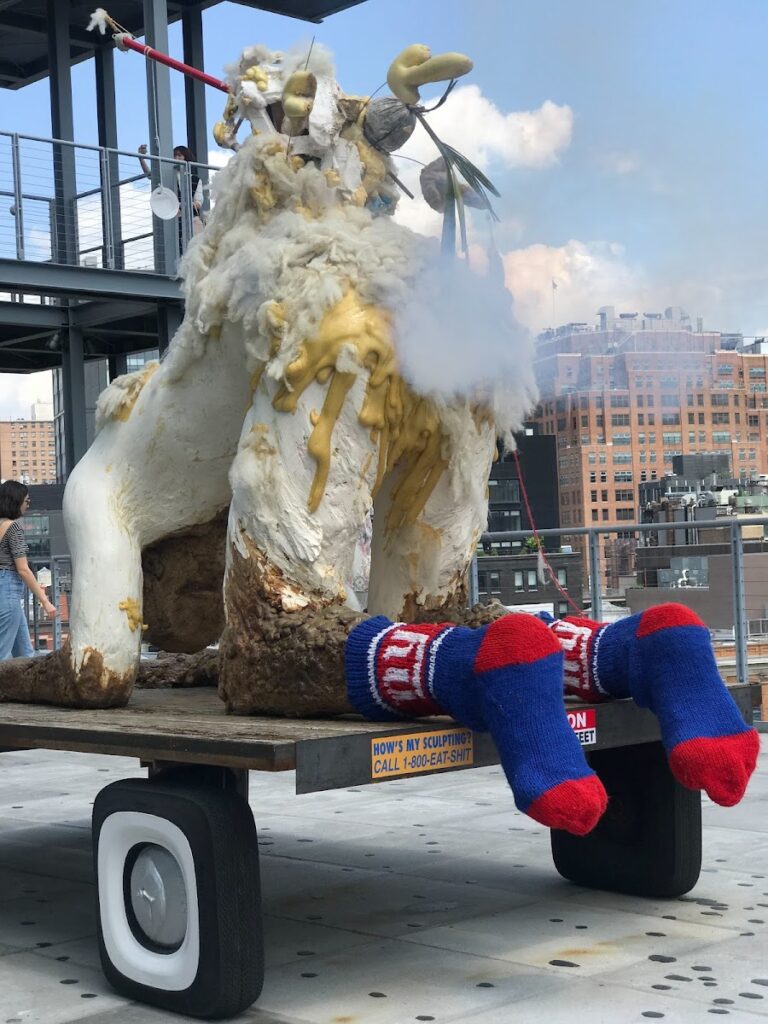
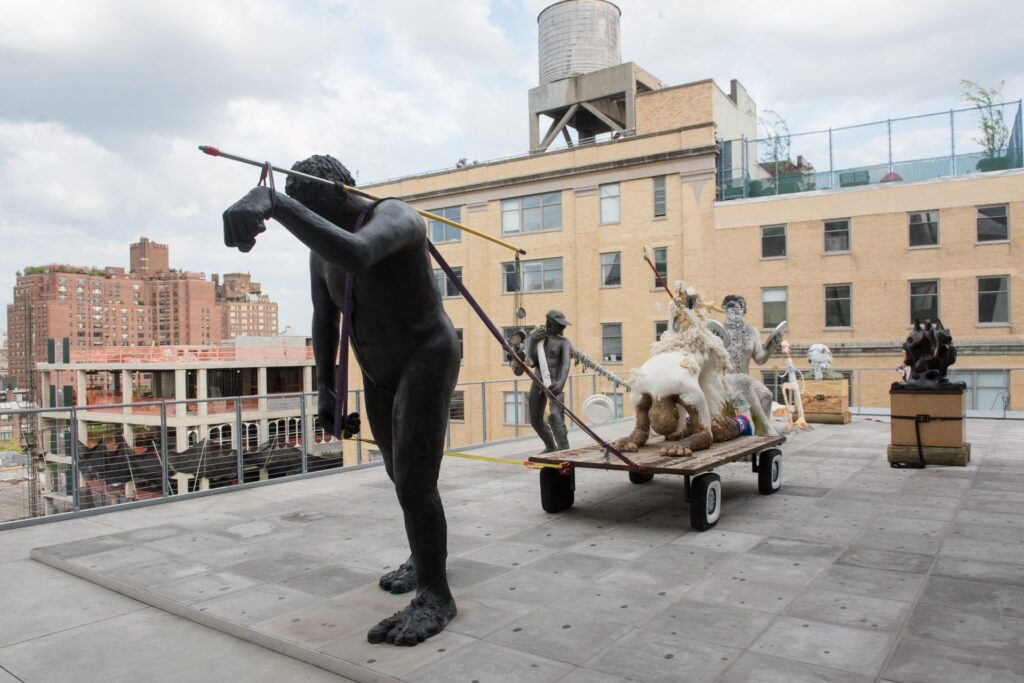
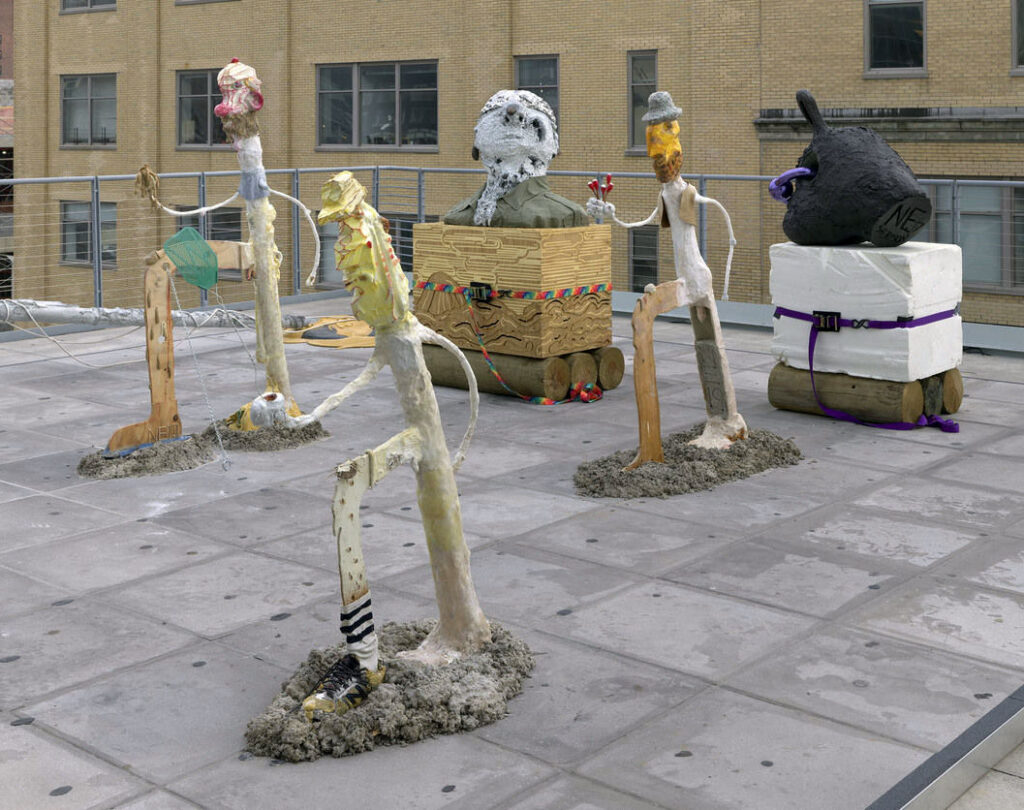
Expand to learn more
These are photographs of Procession (2019), a multi-sculpture installation by Nicole Eisenman. Procession is made up of 9 humanoid giants made from various materials including bronze and plaster as well as other found materials. Some are partially coated in oil and charcoal. The sculptures are arranged in a caravan like procession. Combining their slouched and overturned positions, the oozing materiality, and the militaristic connotations, the procession can feel like a death march.
When contrasted with historical processional paintings such as Washington Crossing the Delaware (1851) by Emanuel Leutze or Liberty Leading the People (1830) by Eugène Delacroix, Eisenman satirizes and criticizes the ways in which we document and record history.

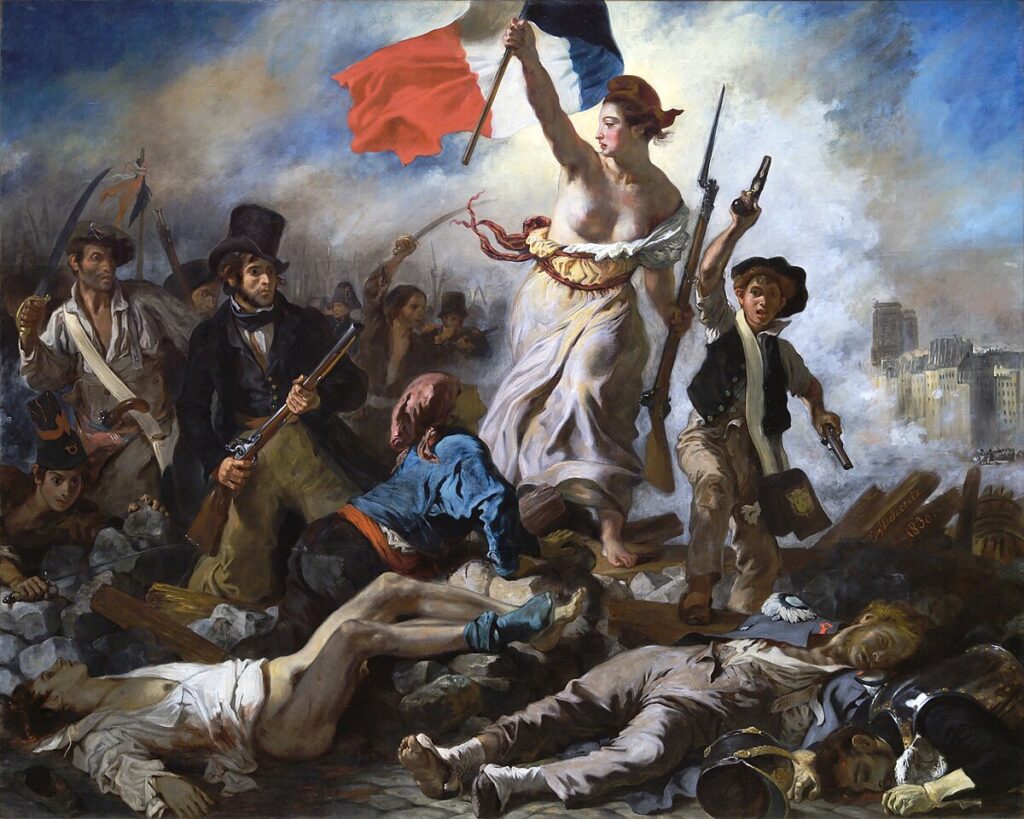
In other ways, individuals may feel companionship or relate with the figures and their difficult, abject, potentially depressing procession through life. Eisenman engages a level of comedic wit into her works that I think comes through particularly well with Procession. Museum Piece con Gas (featured in the top left photo) does this particularly well as it intermittently releases hot gas from its behind.
What does a procession make you think of? Is it something powerful and communal like a march or a protest, something intimate like a funeral or something else entirely?
About the artist
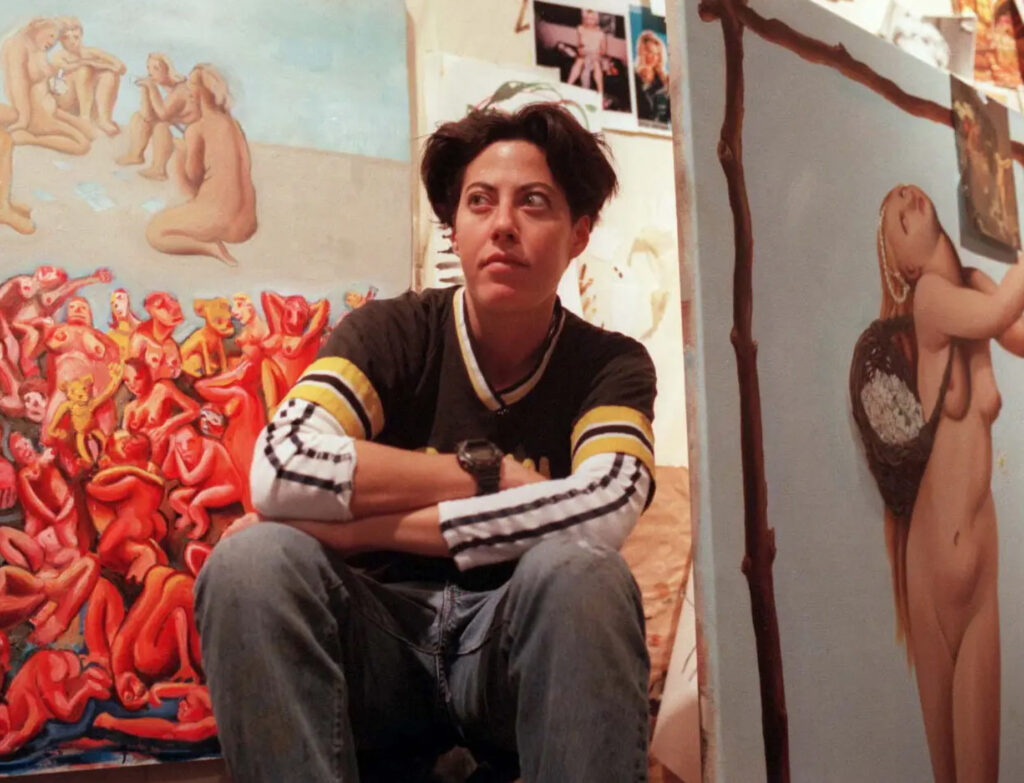
Nicole Eisenman (b. 1965) is a French-born American artist who works primarily in painting, and more recently in sculpture. She is best known for her figurative oil paintings that play with themes of sexuality, irony, and caricature. Stylistically, Eisenman draws from the social and political legacy of German expressionism, most obviously through their use of vibrant, jarring colors and shapes as well as a focus on individual emotion.